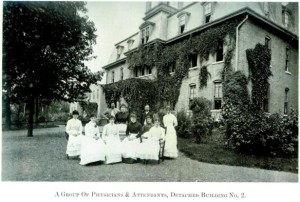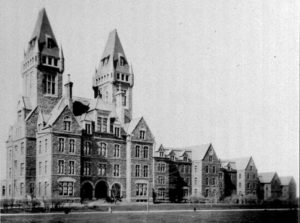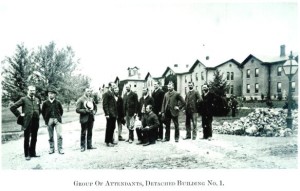Though insanity had been recognized since the country was founded and asylums (both private and state-funded) had been around for almost a hundred years, doctors had not instituted any systematic training for asylum attendants. Attendants were the front line resource for any asylum, and their interaction with patients could greatly contribute to their comfort and recovery–or to their misery and mental distress. Many doctors, of course, made individual efforts, but training could be particularly haphazard at state institutions. One main problem was that there was little status attached to being an attendant, the work was hard, and the pay low. Many times, asylums could only get the type of worker no one else would employ, particularly since able-bodied men typically had a number of other choices.
Women had fewer choices, and it was likely easier for asylums to find female workers of good quality. In 1883, the Buffalo State Asylum began a general course of instruction for women, mainly pertaining to the rules of the institution, with some specifics on caring for the insane. The training was given as an experiment at first, but was successful enough that the asylum’s Board of Managers offered the course formally. Students had to pass a state civil service exam and successfully pass a test after the course. They then received a certificate. A male attendants’ course began in 1885 when the formal program began.

Group of Physicians and Attendants at Willard Asylum for the Chronic Insane, courtesy inmatesofwillard.com

